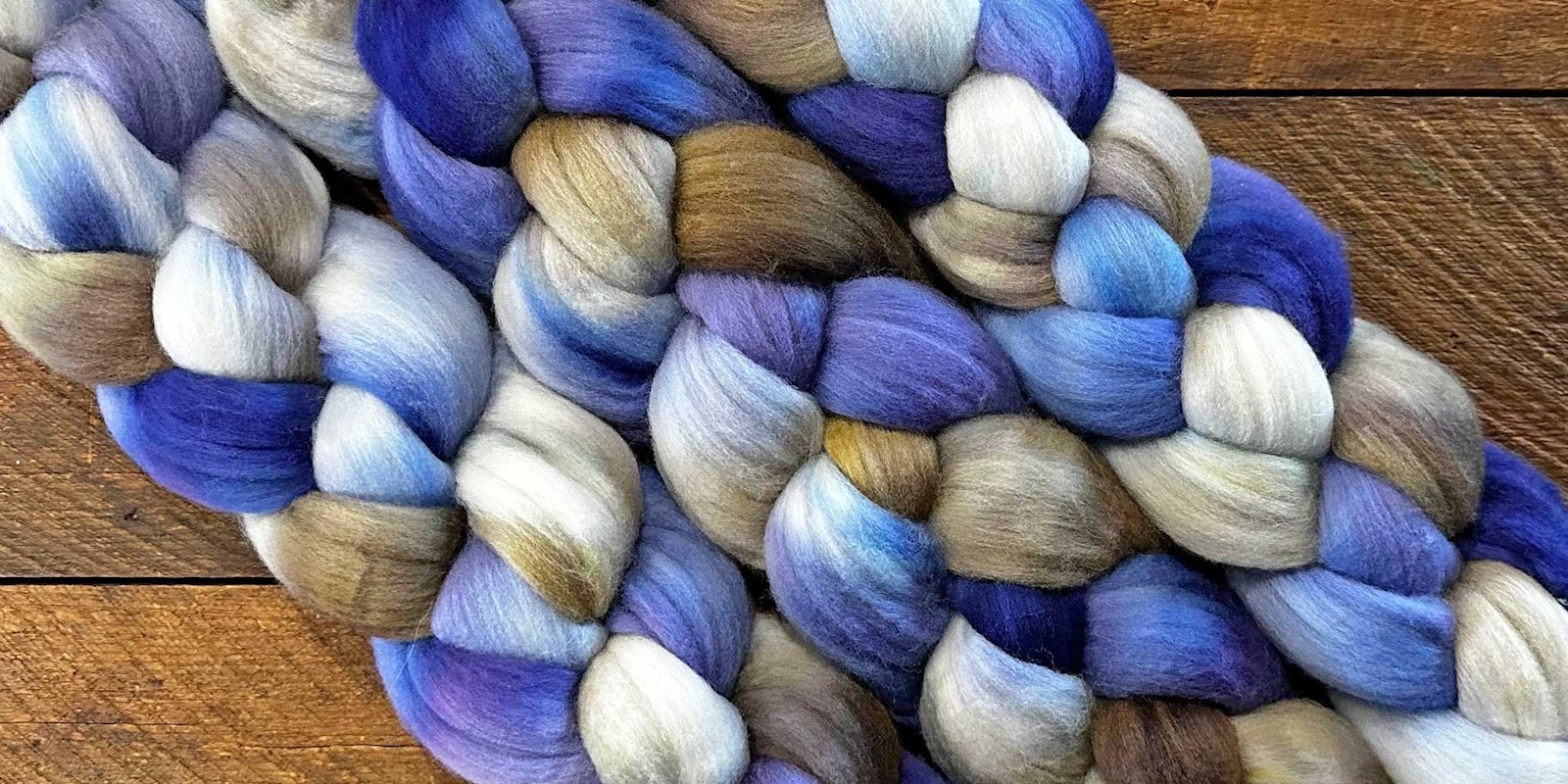Have you seen “100% Shaniko Wool” on a fiber or skein and wondered what makes it different? Shaniko Wool Company founder Jeanne Carver wrote a great article for Spin Off Winter 2024 about the Oregon-based company and the 500,000 pounds of Responsible Wool Standard certified finewools they are growing across the Western states each year.
 Finewool sheep grazing in Oregon. Photo courtesy of Shaniko Wool Company
Finewool sheep grazing in Oregon. Photo courtesy of Shaniko Wool Company
You’ll find the full story from Jeanne in her own words in the Winter issue, but I also wanted to do a little spinner’s taste test with two Shaniko Wool Company combed tops available from North Carolina’s Meridian Mill House: Rodanthe (non-superwash) and Happy Valley (superwash).
Kate Gives It a Spin: Undyed
As Jeanne tells us in the article, the ranches of Shaniko Wool Company raise “Merino and Merino/Rambouillet cross sheep with some Columbia influence,” and Meridian Mill House indicates that its Shaniko Wool combed tops and yarns are about 21 microns. So—not surprisingly—my first impression is just how soft the fiber is as I pull it out of the package. However, it has the velvety, buttery hand of finewools that retain some of the plump crimpiness we handspinners would find in a hand-processed fleece. Let’s take a closer look.
 A pinch of Rodanthe (left) and Happy Valley (right) combed tops to see crimp and staple length. Photo by Kate Larson
A pinch of Rodanthe (left) and Happy Valley (right) combed tops to see crimp and staple length. Photo by Kate Larson
The staple length is the same for both tops (about 5 inches or 12 centimeters) with Rodanthe having a more obvious crimp and airiness compared to the superwash treated Happy Valley. Both tops are the same bright white. Happy Valley has a bit of the slight slipperiness of a superwash fiber but otherwise feels like Rodanthe.
I sat down at one of my wheels and spun samples of both fibers using the same ratio. Both tops were very easy to spin into a heavy laceweight with my usual draws for this fiber prep: short forward and short backward (worsted) draws. The combination of the staple length and friendly crimp made drafting control a breeze. I also tried both by spinning from the fold using a long draw (woolen) and found the same results.
And finally, I hit my samples with some steam to quickly get a feel for how my yarns would respond to wet finishing.
 Spin-test samples from left: Rodanthe off the bobbin, Rodanthe steamed, Happy Valley off the bobbin, and Happy Valley steamed. Photo by Kate Larson
Spin-test samples from left: Rodanthe off the bobbin, Rodanthe steamed, Happy Valley off the bobbin, and Happy Valley steamed. Photo by Kate Larson
How Does It Take Dye?
Well, you can see for yourself! Ellen Zawada at Zephyr Creek sells hand-dyed tops using a variety of bases, including Rodanthe. Ellen says, “Being a shepherd myself, I deeply appreciate the ethical practices upheld by Shaniko Wool. Their commitment to sustainability and animal welfare aligns with my values, making them a brand I wholeheartedly support and admire.”
 Photos courtesy of Ellen Zawada at Zephyr Creek
Photos courtesy of Ellen Zawada at Zephyr Creek
Learn more about Shaniko Wool and the Responsible Wool Standard they follow, working to create sustainable relationships between the sheep, the land, and those who tend both. Find it in our Deep Roots, Natural Fibers issue: Spin Off Winter 2024.
—Kate
Resources
Meridian Mill House, meridianmillhouse.com
Zephyr Creek, etsy.com/shop/zephyrcreek
Kate Larson, editor of Spin Off, teaches handspinning around the country and spends as many hours as life allows in the barn with her beloved flock of Border Leicesters.

